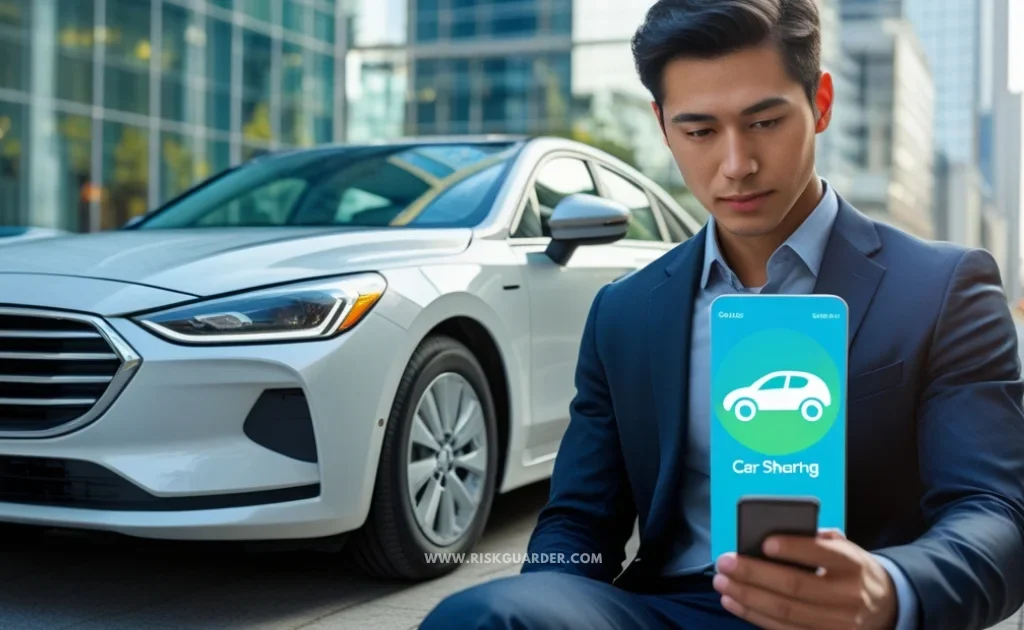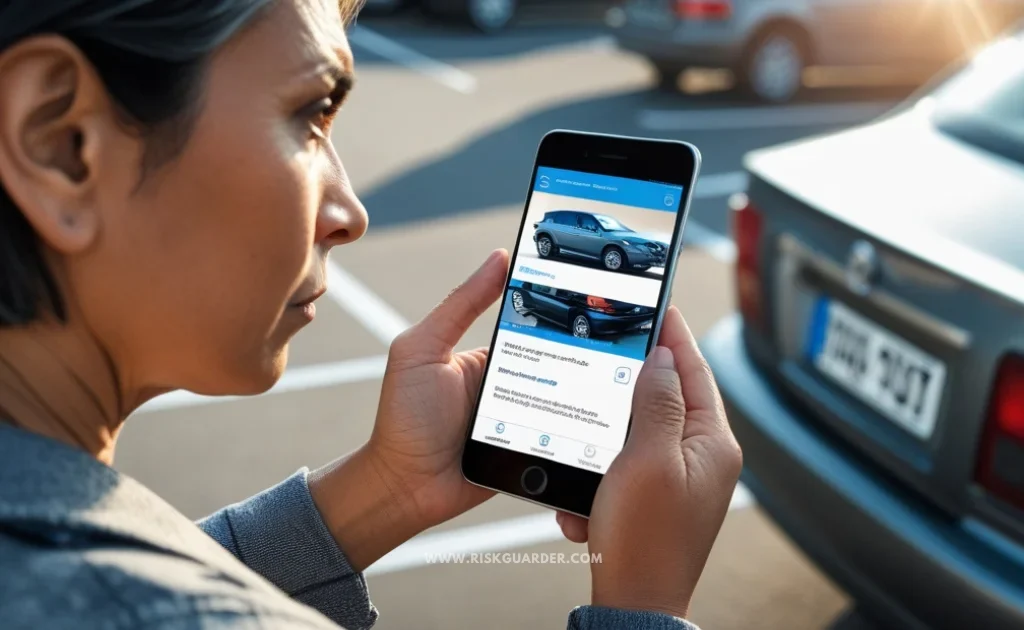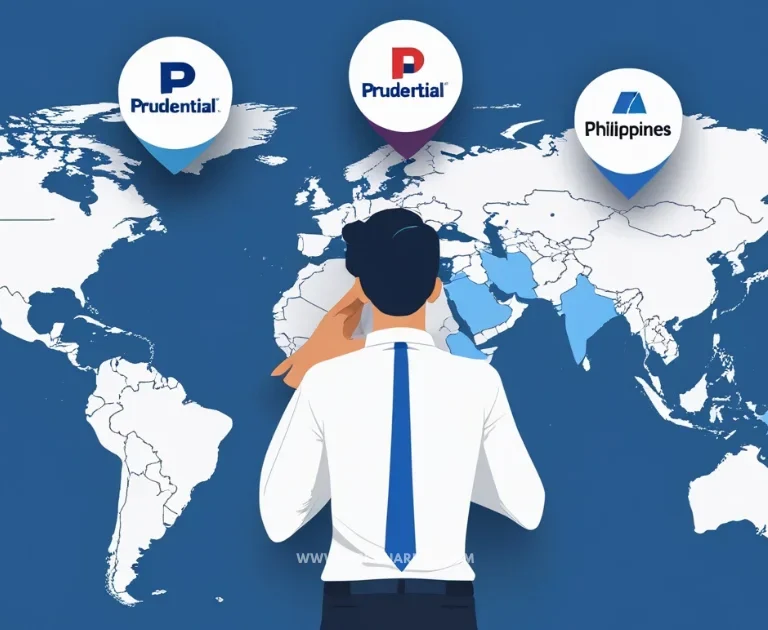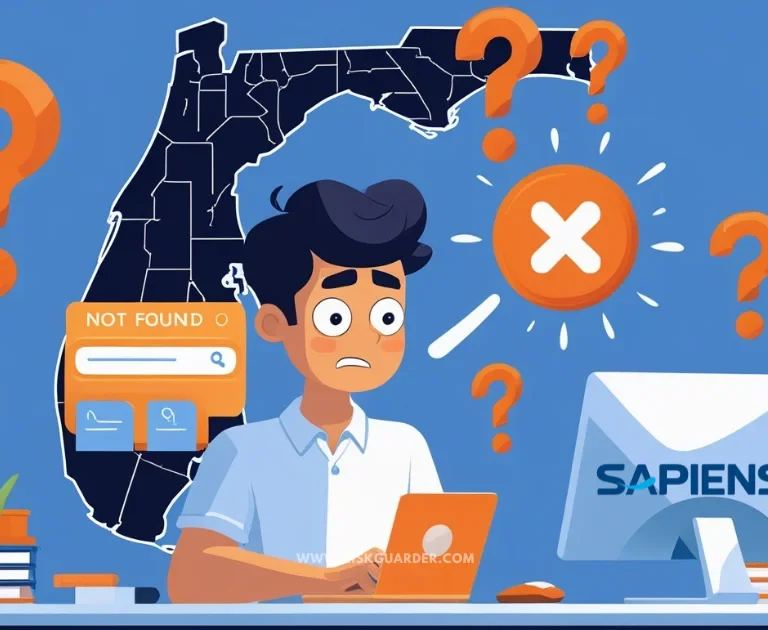Planning Your Epic Road Trip? Your Car Insurance Just Got a Whole Lot Smarter
Okay, so you’re planning a road trip – awesome! But here’s the thing nobody tells you: your car insurance situation is way more important (and interesting) than it used to be. Gone are the days when you’d just cross your fingers and hope your boring old policy would cover whatever happened on the road. This guide will break down the most important innovations in auto insurance for road trips and what they mean for your next adventure.
The traditional annual car insurance model wasn’t designed for the modern traveler. Whether you’re driving cross-country once a year or taking multiple weekend getaways, these emerging technologies are creating opportunities to match your coverage precisely to your driving patterns. Our analysis is based on the official RiskGuarder Review Methodology, examining how these innovations impact financial strength ratings, customer satisfaction scores, and real-world claims processing experiences.
Innovations at a Glance
For the Saver: Usage-Based Insurance (UBI): Pay based on how well and how much you drive. Perfect if you’re a safe driver but are taking one long trip.
For the Renter: Embedded Insurance: Seamlessly get coverage when you rent a car or use a car-sharing service, right from an app.
For the Unfortunate: AI-Powered Claims: If you have an accident, you can file a claim in minutes by taking photos with your phone, getting you back on the road faster.
For the Future: Autonomous Vehicle Coverage: The next frontier, where the car’s software is insured, not just the driver.
Table of Contents
Innovation #1: Pay-As-You-Drive Insurance (Telematics & UBI)

Usage-based insurance for long trips represents the most significant shift in auto insurance pricing since the industry began. Instead of paying a flat annual premium based on broad demographic categories, your car insurance price is now based on your actual driving behavior, measured through your smartphone app or a small device plugged into your car’s diagnostic port.
This technology addresses a fundamental unfairness in traditional insurance: safe drivers who take occasional long trips were penalized for their annual mileage, even though distance alone doesn’t determine risk. The new telematics insurance programs measure factors like hard braking, rapid acceleration, phone usage while driving, and time of day you’re on the road. For road trip enthusiasts, this creates an unprecedented opportunity to demonstrate their driving skills when it matters most.
Road Trip Scenario: The Safety Score Advantage
Scenario: The Miller family drives 3,000 miles on their summer road trip, but they are very safe drivers with no hard braking, no speeding, and no phone usage while driving.
The Benefit: While their mileage is high for that month, their excellent safety score can still earn them a significant discount of 15-30% on their premium. Their telematics data proves they’re low-risk drivers despite the high mileage, something traditional insurance couldn’t capture.
The leading pay-per-mile car insurance for road trip programs currently available include Progressive Snapshot, which has earned an A+ (Superior) financial strength rating from A.M. Best and maintains a NAIC complaint index below the industry average. State Farm’s Drive Safe & Save program similarly leverages telematics data, with the company holding an A++ rating from A.M. Best and consistently high customer satisfaction scores in J.D. Power studies.
Allstate’s Drivewise program rounds out the top tier, offering policy endorsements that can reduce premiums by up to 40% for the safest drivers. According to NAIC data, Allstate maintains a complaint index of [0.85], indicating fewer complaints than the industry standard. These programs typically offer available discounts that compound with safe driving behaviors, potentially saving road trip enthusiasts hundreds of dollars annually.
The key advantage for road trip planning lies in understanding how these programs calculate risk. Traditional insurance penalizes high-mileage months equally, regardless of driving quality. UBI programs recognize that a careful driver covering 3,000 highway miles presents different risk than an aggressive driver covering 1,000 city miles. This distinction becomes crucial when evaluating coverage limits and deductibles for extended travel.
Innovation #2: On-Demand & Embedded Insurance

The concept of temporary car insurance for road trip scenarios has evolved far beyond traditional short-term policies. Modern embedded insurance means getting coverage exactly when and where you need it, for exactly how long you need it, seamlessly integrated into the services you’re already using.
This innovation addresses the coverage gaps that frequently occur during road trips involving rental cars, car-sharing services, or borrowed vehicles. Instead of navigating complex policy endorsements or purchasing expensive daily rental coverage, embedded insurance platforms provide instant, customized protection through the same interface you use to book the service.
Road Trip Scenario: Seamless Rental Coverage
Scenario: You’re renting a car through Turo for a three-day leg of your trip through the Pacific Northwest, but your personal auto policy has limited coverage for peer-to-peer rentals.
The Benefit: Embedded insurance is built directly into the Turo platform. You can select comprehensive coverage, adjust your deductibles, and pay for protection in seconds within the app, with no need to call an agent or navigate separate insurance websites.
Companies like One Inc are building the technology infrastructure that makes this possible. Their platforms allow insurers to offer on-demand car insurance products that can be purchased, modified, and claimed entirely through mobile applications. This represents a fundamental shift from annual contracts to dynamic, trip-specific coverage.
The claims processing advantages are equally significant. Self-driving cars are going to completely flip the insurance world upside down. Instead of asking “who was driving?” when there’s an accident, we’ll be asking “what was the software doing?” It’s going to be weird but also kind of cool.
This matters for road trips because most of the self-driving features work best on highways – exactly where you spend most of your road trip time. Things like cruise control that adjusts to traffic and systems that keep you in your lane are already affecting insurance rates.
The big question everyone’s trying to figure out is: if the car’s computer causes an accident, who’s responsible? The person in the driver’s seat, the car company, or the software company? It’s going to be interesting to see how this plays out.
From a financial strength rating perspective, these embedded products are typically backed by established carriers with strong A.M. Best ratings. The technology platforms serve as distribution channels rather than risk-bearers, meaning consumers still benefit from the financial stability of major insurers while gaining access to innovative coverage options.
The available discounts in embedded insurance often differ from traditional auto policies. The insurance companies are already starting to give discounts for cars with automatic emergency braking and blind spot monitoring, so if you’re shopping for a road trip vehicle, that’s worth keeping in mind.
This is definitely the future, and it’s coming faster than most people think.
Innovation #3: AI-Powered Claims (The “Photo is the Proof”)

The Phone Camera Magic That’ll Save Your Road Trip
Okay, this is hands down the coolest thing happening in car insurance right now, and it’s going to be a total lifesaver if you ever get stuck dealing with an accident on the road. Instead of sitting around for days waiting for some insurance guy to drive out to wherever you’re stranded (which could be literally hundreds of miles from his office), you just pull out your phone, snap some pics, and boom – you get an instant damage report and can start fixing things right away.
I’m not even exaggerating here – this tech completely fixes the absolute worst part of getting in a fender-bender during a road trip: being stuck in some random town with zero idea when you’ll be able to get back on the road. What used to turn into a multi-day nightmare can now be sorted out the same day, so you can get back to actually enjoying your vacation instead of stress-eating vending machine snacks in a motel lobby.
Companies like Ravin.ai (seriously cool name) are building this computer vision stuff that’s honestly pretty mind-blowing. The AI can look at your photos and figure out what’s damaged, how much it’ll cost to fix, and even tell you if your car’s still roadworthy. It’s as accurate as having a real person examine it, but way, way faster.
Picture This Disaster (With a Happy Ending):
So you’re 500 miles from home, stopped at some grocery store to grab camping supplies, and someone backs into your car in the parking lot. Total classic road trip nightmare, right?
But here’s what happens now: you open your insurance app, take a few photos of the damage from different angles, and within minutes the AI spits out that it’s $1,847 worth of damage (weirdly specific, but okay), confirms your car’s totally fine to keep driving, and gives you a list of approved repair shops within 10 miles. It even sends the estimate directly to those shops so you can call and set something up right away. You can either get it fixed locally or wait until you get home – totally your call.
Why This is Such a Game-Changer
The satisfaction surveys don’t lie – most people judge their insurance company based on how claims go, and the biggest complaint is always “it takes forever.” Regular claims processing takes about a week to 10 days for minor stuff, which feels like an eternity when you’re supposed to be on vacation. These AI systems can give you answers and approval in just a few hours.
Plus, insurance companies using this tech are getting way fewer angry phone calls and complaints. Makes total sense – when you’re not left hanging with no information, you’re probably not going to be calling to yell at customer service.
Here’s another thing I love about this: human adjusters can be all over the place with their estimates. One person might say $2,000, another might say $1,500 for the exact same dent. It’s like getting different quotes from contractors – frustrating and confusing. The AI is consistent every time and has access to massive databases of repair costs and parts prices, so you’re way less likely to get hit with surprise extra charges later.
Your deductible and coverage amounts stay the same, but the speed factor can save you serious cash. Less time waiting around means less money blown on rental cars, unplanned hotel nights, and all those other costs that pile up when you’re stuck somewhere you didn’t plan to be.
The Robot Car Revolution (It’s Coming Faster Than You Think)
Now here’s where things get really wild. Self-driving cars are about to completely flip the insurance world upside down, and honestly, it’s going to be fascinating to watch this play out.
Think about it – right now when there’s an accident, the big question is “who messed up?” But when cars are driving themselves, it becomes “did the computer mess up?” That’s a totally different conversation, and the insurance industry is scrambling to figure out how to handle it.
This is super relevant for road trips because most of the self-driving features work best on highways – you know, exactly where you spend most of your long-distance driving time. Things like adaptive cruise control that adjusts to traffic, lane-keeping that nudges you back if you drift, and automatic braking are already changing how insurance companies think about risk and set their prices.
The million-dollar question that everyone’s debating at those fancy insurance conferences is: if a self-driving car crashes, who’s responsible? The person sitting in the driver’s seat? The company that made the car? The programmers who wrote the software? It’s like the world’s most expensive game of hot potato, and nobody wants to be left holding it.
What This Means for Planning Your Next Road Trip
Pretty soon, picking a road trip vehicle might involve thinking about way more than just “is it reliable and will it get stolen?” The car’s computer systems and their track record could become huge factors in how much you pay for insurance.
The good news is that people with cars that have fancy safety features are already seeing some benefits. If your ride has automatic emergency braking or blind spot monitoring, some insurance companies will cut you a break because you’re statistically less likely to have certain types of accidents. It’s like getting a discount for being responsible, which I’m totally here for.
Here’s the really sci-fi part: these smart cars are constantly recording data about everything – road conditions, how the car’s performing, what happened in the moments before any incident. If something does go wrong, there’s going to be so much information available that figuring out what happened and who’s at fault could become way more straightforward. No more “he said, she said” situations – the car’s computer will have the whole thing on record.
It’s pretty crazy to think we’re heading toward a world where your car might be a better witness to an accident than you are, but that’s definitely where we’re going. And honestly? If it means faster, more accurate claims and fewer arguments about what actually went down, I’m all for it. Anything that gets me back on the road and back to my vacation faster is a win in my book.
Frequently Asked Questions
Is usage-based insurance a good idea for a long road trip?
Honestly? If you’re a decent driver, absolutely yes! Here’s the thing most people don’t realize – these programs care way more about how you drive than how much you drive. So if you’re planning to cruise 3,000 miles on highways but you’re not one of those people who tailgates and slams on brakes, you’ll probably come out ahead compared to someone who drives aggressively around town for just 1,000 miles.
Road trip driving is actually perfect for these programs because highway driving makes you look like a driving saint. Think about it – you’re going steady speeds, no crazy intersections, no stop-and-go traffic that makes you want to scream. As long as you keep your hands off your phone and don’t drive like you’re in Fast & Furious, a long road trip might actually improve your safety score and lower your rates.
Progressive Snapshot users with good safety scores can save up to 30%, even during high-mileage months. The cool part is they look at your driving over six months, so one epic road trip gets averaged out with all your normal boring commuting. Pretty sweet deal if you ask me.
Can I get car insurance for just one week?
Yep, but it depends on what you’re trying to do. Traditional insurance companies are still stuck in the stone age with their six-month minimum policies, but there are definitely workarounds.
If you’re renting a car, you’re golden. Apps like Turo and Getaround have insurance built right in for exactly as long as you need it. It’s usually better and cheaper than whatever the rental car counter people are trying to sell you (and way less pushy).
Borrowing your buddy’s car for a week-long adventure? That’s trickier. Some companies offer temporary policies, but they usually want at least 30 days minimum. There are some new on-demand insurance apps popping up that’ll cover you for just a few hours, but they’re not available everywhere yet.
The short version: if you’re renting, you’re all set. If you’re borrowing, you might need to get creative or commit to a longer policy.
How can AI speed up a car insurance claim?
It’s honestly pretty mind-blowing. You take pictures of your banged-up car with your phone, and the AI looks at them and basically becomes an instant damage expert. It can tell you what’s broken, how much it’ll cost to fix, and whether your car’s safe to keep driving – all in minutes instead of days.
The AI has been “trained” (fancy computer term) on millions of accident photos, so it knows what a $500 dent looks like versus a $2,000 mess. When you upload your photos through your insurance app, it immediately figures out what parts are damaged, estimates repair costs, and even tells nearby repair shops what’s up so you can schedule something right away.
This is huge for road trips because nobody wants to be stuck in the middle of nowhere waiting for an insurance adjuster to drive out from who-knows-where. The whole thing – from taking photos to getting repair approval – can happen in under an hour for minor damage.
Trust me, if you’ve ever had to deal with traditional claims processing while trying to enjoy a vacation, this AI stuff is like a gift from the travel gods. No more sitting in random hotel rooms for days wondering when you’ll be able to continue your trip.
Conclusion: A Smarter Way to Insure Your Adventure
Look, car insurance used to be this one-size-fits-all thing that made about as much sense as wearing the same outfit to the beach and a business meeting. But finally – finally – it’s starting to catch up with how we actually live and drive.
These new innovations mean you can actually get coverage that makes sense for your specific situation. If you’re a careful driver who takes one big road trip a year, you can get rewarded for that instead of penalized. If you need rental car coverage just for a weekend, you can get it without jumping through hoops. And if something goes wrong, you don’t have to put your life on hold while paperwork gets shuffled around.
The insurance world is finally figuring out that not all drivers are the same, and not all trips are the same. A safe driver cruising cross-country is totally different from someone weaving through city traffic every day, and the pricing should reflect that.
What’s really exciting is that this is just the beginning. With self-driving cars and even smarter risk assessment coming down the pipeline, insurance is becoming more like a personalized service than a generic product. For those of us who love hitting the road, that means better coverage at better prices that actually make sense for how we travel.
Ready for Your Next Adventure?
The road ahead for car insurance is honestly as exciting as the destinations you’re planning to visit. Whether you’re plotting a cross-country epic or just planning weekend getaways, these innovations mean you can focus on the fun stuff – like where to stop for the world’s best pie or which scenic route to take – instead of worrying about whether you’re covered if something goes wrong.
The insurance industry finally gets that we’re not all driving to the same office every day anymore, and they’re building products that actually work for real people taking real trips. It’s about time, right?






